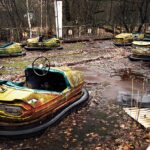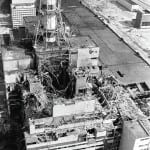The Ukraine will on April 26 mark 25 years after explosions at the Chernobyl Nuclear Power Plant (then in the Ukrainian Soviet Socialist Republic) resulted in a fire that sent a plume of radioactive fallout into the atmosphere and over an extensive area. The catastrophe—much cited as the worst nuclear accident in the world—was said to have directly caused 50 deaths and indirectly caused a total of 4,000 deaths as a consequence of increased cancer risk.
But time, in its quintessential way of healing wounds, has allowed the so-called “zone of alienation” to recover modestly. Last December, Ukraine’s Minister of Emergency Situations Viktor Baloga told reporters that starting in January 2011, the 19-mile exclusion zone around Chernobyl’s sealed Reactor No. 4 would be opened to the public (Figure 5). Helen Clark, an administrator for the United Nations Development Program, standing alongside Baloga on Dec. 12, explained one reason for the opening to reporters: “This is the story of the mighty men at the cost of their lives have taken control of nuclear danger. This is the story of families who left their homes. It’s sad pages of life in Ukraine, but they should not only tell the world, but also show [what] happened here.” The minister’s office also reportedly said the site’s opening would enable it to recover while revealing a “great economic potential in Ukraine.”
 |
| 5. Remembering the first responders. Ukraine’s government recently announced plans to open the 19-mile exclusion zone around Chernobyl—site of the worst nuclear accident in history—to the public starting in 2011, 25 years after the catastrophic event. Plans call for guides to lead tourists around the so-called “zone of alienation.” According to reports, though background radiation in the area remains well above normal, flora and fauna have returned to the area. This image shows a monument built to remember the firefighters who were the first responders. Courtesy: Ukraine Ministry of Emergency Situations |
The government says that background radiation in the accident zone remains well above normal, but it is far from being a wasteland: Flora and fauna have returned to the abandoned city of Pripyat. Among the minister’s immediate plans were to “finish building a new safer shell for the exploded reactor by 2015.” It would cover the original iron-and-concrete structure built as a speedy measure to cover the reactor that has been leaking radiation and was on the brink of collapse. Other plans included implementing projects to provide heat and electricity to the Chernobyl zone.
—Sonal Patel is POWER’s senior writer.










